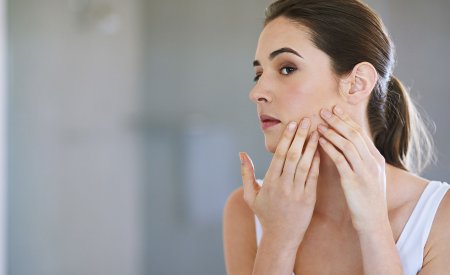Understand my skin
Sebum: the no. 1 problem for oily, acne-prone skin
People with combination or oily skin have problems with sebum quantity and quality, which means their skin is more likely to have pimples and other blemishes. But blemishes can also be linked to other diseases like eczema, for example, which make them more difficult to treat. Finally, acne is very common during adolescence, affecting 80% of young people. But it can also impact adults, both men and women, taking other specific forms in this case. Its psychological repercussions are often significant and proper management is necessary, especially since acne disappears with appropriate treatment in the vast majority of cases.















